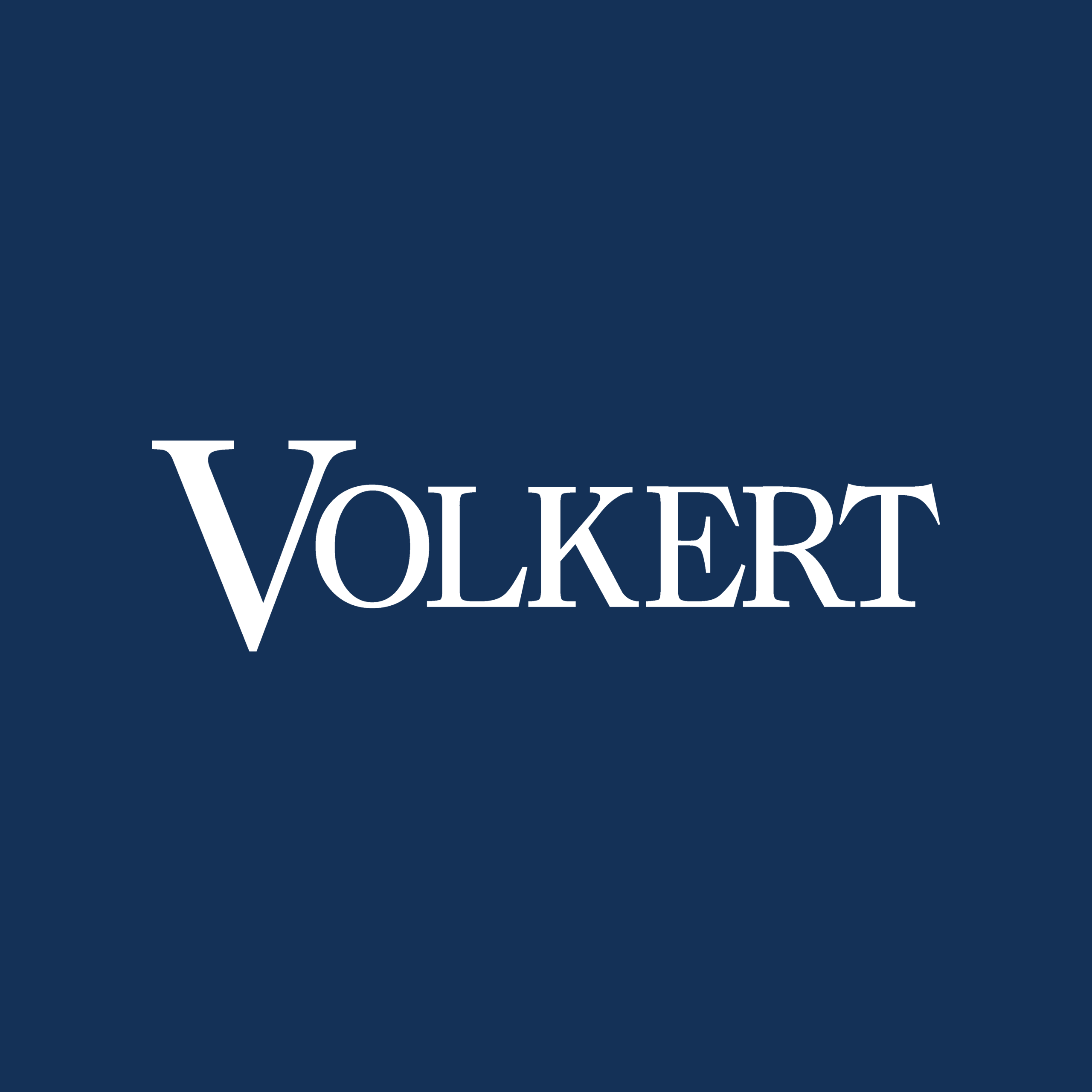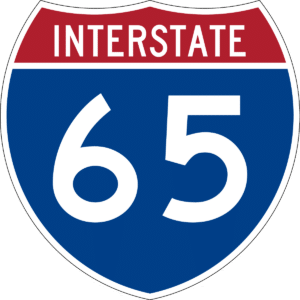 Highways and roads serve as the backbone of the U.S. transportation system, allowing citizens to travel more than three trillion miles annually. However, the conditions of our infrastructure are deteriorating as the need for transportation improvements far outpaces the amount of state and federal funding available.
Highways and roads serve as the backbone of the U.S. transportation system, allowing citizens to travel more than three trillion miles annually. However, the conditions of our infrastructure are deteriorating as the need for transportation improvements far outpaces the amount of state and federal funding available.
“Many times, the engineering designs are available but are shelved because the funding doesn’t exist,” says Jay Dickson, assistant vice president for Volkert, Inc.
Infrastructure funding poses many challenges to government agencies across the United States, especially in rapidly growing cities. According to TRIP, a national transportation research group, the current backlog in needed road and highway rehabilitation is $419.5 billion. TRIP recommends the nation’s current $41 billion annual investment be increased by 33 percent to $61 billion to maintain and improve the condition of America’s roads and highways.
What is the federal grant program?
Volkert has partnered with many local and state agencies to identify and pursue grant funding opportunities to fill budgetary gaps and deliver much-needed public infrastructure to communities throughout the country. Over the past 10 years, Volkert has successfully assisted several clients with applying for and receiving infrastructure funding through the U.S Department of Transportation’s (USDOT) grant program.
Formerly known as Transportation Investment Generating Economic Recovery (TIGER) and currently known as Better Utilizing Investments to Leverage Development (BUILD), these programs provide a unique opportunity for the USDOT to invest in road, rail, transit, and port projects that promise to achieve national objectives.
For 2018, the BUILD Grant program was intended to award $1.5 billion in grants, with no more than $150 million awarded to a single state. There was also a greater emphasis on awarding grants to projects in rural areas, with a goal of at least 30 percent of the funds being thus awarded.
“These discretionary programs have been a ‘go-to’ source of federal funding for local and state transportation projects, and Volkert has successfully assisted clients with securing over $45 million in transportation funding through these federal programs,” says Dickson.
The latest success was with the City of Spring Hill, Tenn., for the I-65 interchange at Buckner Road extension that received $25 million in federal funds through BUILD, the highest possible award amount.
History of the Tennessee project
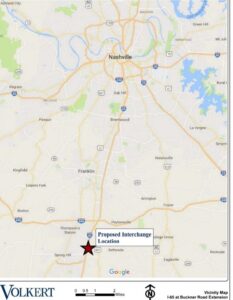 About ten years ago, current Volkert staff began working with the City of Spring Hill and Williamson County, Tennessee, to identify a potential location for a new I-65 interchange. Middle Tennessee has experienced rapid growth over the past decade, much of which has been focused in Williamson County, Spring Hill, and Thompson’s Station. This growth and development, which is projected to continue, has resulted in ever increasing congestion within the regional transportation network.
About ten years ago, current Volkert staff began working with the City of Spring Hill and Williamson County, Tennessee, to identify a potential location for a new I-65 interchange. Middle Tennessee has experienced rapid growth over the past decade, much of which has been focused in Williamson County, Spring Hill, and Thompson’s Station. This growth and development, which is projected to continue, has resulted in ever increasing congestion within the regional transportation network.
Currently, there is a 4.5-mile stretch on I-65 with no interchanges between I-840 and SR 396 (Saturn Parkway). This high-volume portion of interstate, which runs adjacent to the City of Spring Hill, needed another exit option, and residents of this rapidly-growing area south of Nashville needed another access point for I-65. A new interchange would increase safety, improve regional traffic flow, reduce idling emissions, and encourage economic development.
In 2016, Volkert entered into a contract with the City of Spring Hill and Williamson County to conduct an Interstate Access Request study, with the intent of obtaining Federal Highway Administration (FHWA) approval for a new interchange. The study confirmed the need for a new I-65 interchange at the proposed extension of Buckner Road.
When the City of Spring Hill received the FHWA approval in February 2018, it called on Volkert to assist in writing a BUILD grant application. Volkert staff worked closely with the City to develop and submit the grant application in July 2018. A few months later, Senator Lamar Alexander’s office notified the City that the project had been awarded a $25 million BUILD grant. This project is the only 2018 BUILD grant winner in the state of Tennessee and is one of only 12 projects in the nation out of a total of 91 grant awards to win the full grant amount of $25 million.
BUILD Grant Application Criteria
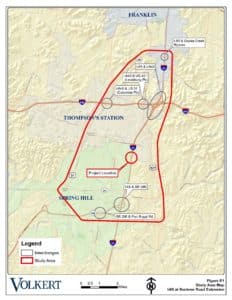 To prepare the BUILD grant, Volkert was responsible for developing the required project narrative and the benefit cost analysis (BCA). A project narrative that describes the project, identifies its components, and demonstrates how the project fits within the BUILD grant guidelines. The following is an outline of the BUILD grant merit criteria that the project was able to achieve.
To prepare the BUILD grant, Volkert was responsible for developing the required project narrative and the benefit cost analysis (BCA). A project narrative that describes the project, identifies its components, and demonstrates how the project fits within the BUILD grant guidelines. The following is an outline of the BUILD grant merit criteria that the project was able to achieve.
Safety – The interchange will ensure a safe transportation system for the movement of goods and people in the surrounding area. The proposed Diverging Diamond Interchange (DDI) can also reduce the number, rate, and consequences of crashes when compared to other types of interchanges.
State of Good Repair – Having an additional interstate access will continue to improve the transportation system and network by providing future transportation network efficiency, mobility of goods, and accessibility of people for economic growth. The City of Spring Hill and TDOT are committed to the long-term maintenance of the proposed improvements.
Economic Competitiveness – By decreasing transportation costs and improving access through reliable and timely access to employment centers and job opportunities, the project creates more economic competitive-ness. The rapidly growing Spring Hill/Williamson County area is home to the General Motors Plant, several automotive component suppliers, the Mars Petcare Global Innovation Center, and many other job opportunities. Also, west of the new interchange location is a 700+ acre undeveloped tract of land that was recently approved for a large-scale regional commercial, office, and residential development.
Environmental Protection – The new interchange will allow vehicles another entry/exit, which will help improve the traffic flow and reduce congestion-related emissions. With a decrease in traffic congestion, there is a decrease in fuel consumption and CO2 emissions.
Quality of Life – The interchange project will improve access to services for people in the City of Spring Hill, Williamson County, and Maury County. It improves connectivity for these citizens to jobs, healthcare, and other critical destinations. Also, decreasing congestion improves the effectiveness of travel south of Nashville and the quality of life of its citizens.
Innovation – The I-65 interchange project utilizes multiple innovative approaches with the functionality of a DDI, which can accommodate twice the left-turn traffic as the design of a conventional interchange. It requires only two signal phases, allowing for shorter cycle lengths and better storage between the ramp terminals.
Partnerships – The I-65 interchange project has widespread support from federal, state, and local agencies as well as private organizations.
Non-Federal Revenue for Transportation Infrastructure – The City of Spring Hill has allocated $23.3 million (48.2% of total project cost) in matching funds (local, TDOT LIC, and STBG funds) for the I-65 interchange project. There is no revenue generated directly from the project.
The Benefits Cost Analysis
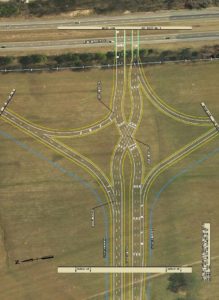 The BCA was developed to show that the project was financially feasible, and the benefits of the project were greater than the project costs. The estimation of benefits which would accrue to the I-65 interchange project follows the methodology outlined in the USDOT Benefit-Cost Analysis Guidance for Discretionary Grant Programs. The I-65 interchange project benefits focus on the travel time costs and vehicle expense incurred due to additional route length if the interchange is not constructed.
The BCA was developed to show that the project was financially feasible, and the benefits of the project were greater than the project costs. The estimation of benefits which would accrue to the I-65 interchange project follows the methodology outlined in the USDOT Benefit-Cost Analysis Guidance for Discretionary Grant Programs. The I-65 interchange project benefits focus on the travel time costs and vehicle expense incurred due to additional route length if the interchange is not constructed.
Additionally, the economic impacts of the approved development west of the new interchange require the proposed I-65 interchange improvements for development and are included in the benefits of the project. The travel time and vehicle expense benefits for this project is projected to be $6.4 million over 20 years. The economic impacts resulting from the construction of this project are projected to be $2.1 billion over 20 years. Thus, the total benefit versus a total project cost of $48.3 million results in a benefit-cost ratio of 44 to 1.
Project Success
The project was selected for funding by the USDOT in December 2018. Volkert has been selected to perform the next step in the project development, which includes the preliminary engineering and NEPA documentation. The first phase of the project is currently scheduled to begin construction in late 2020, and all phases of construction are expected to be completed by 2025. Once completed, this project will be truly transformational for the City of Spring Hill and southern Williamson County by providing the needed transportation infrastructure to support the growing community, while also providing additional opportunities for economic development and the continued economic success of the region.

